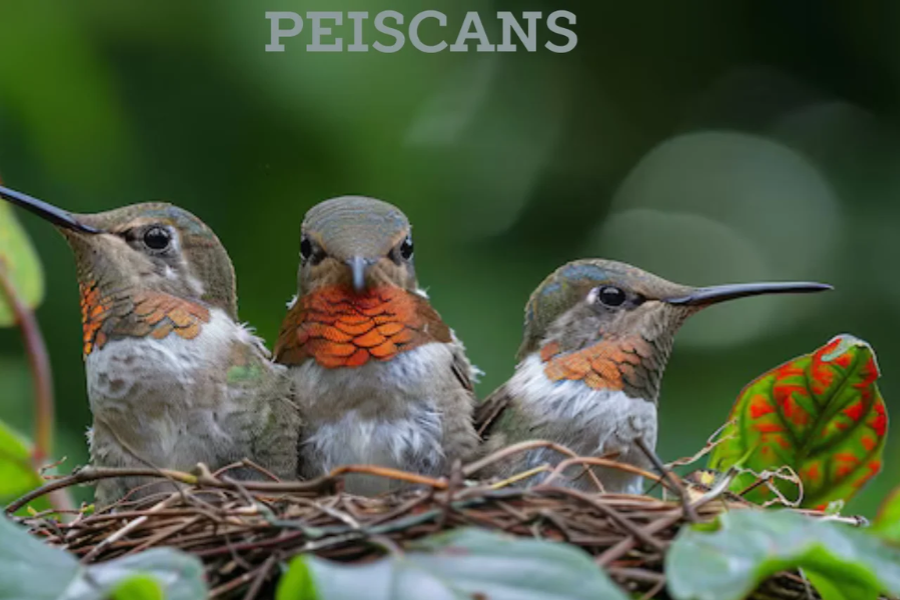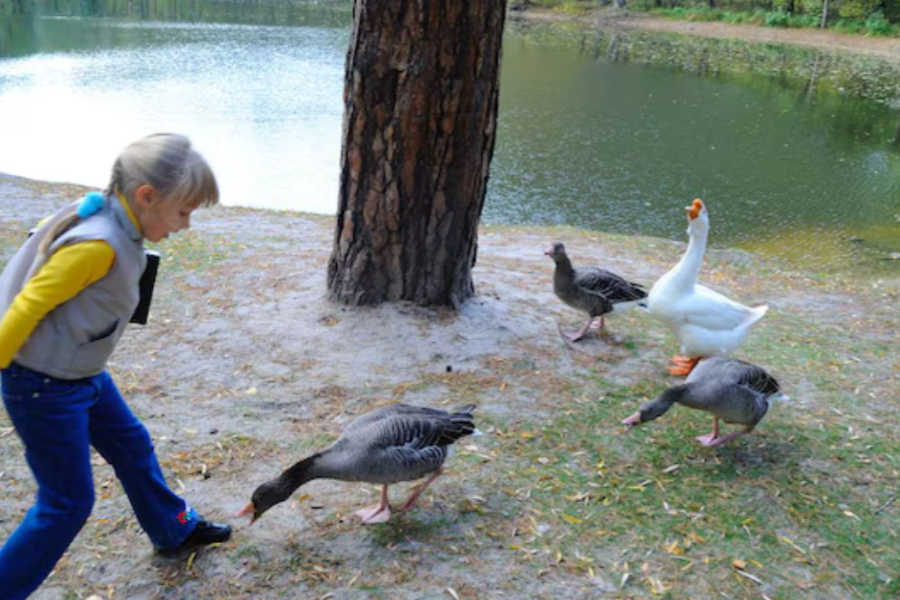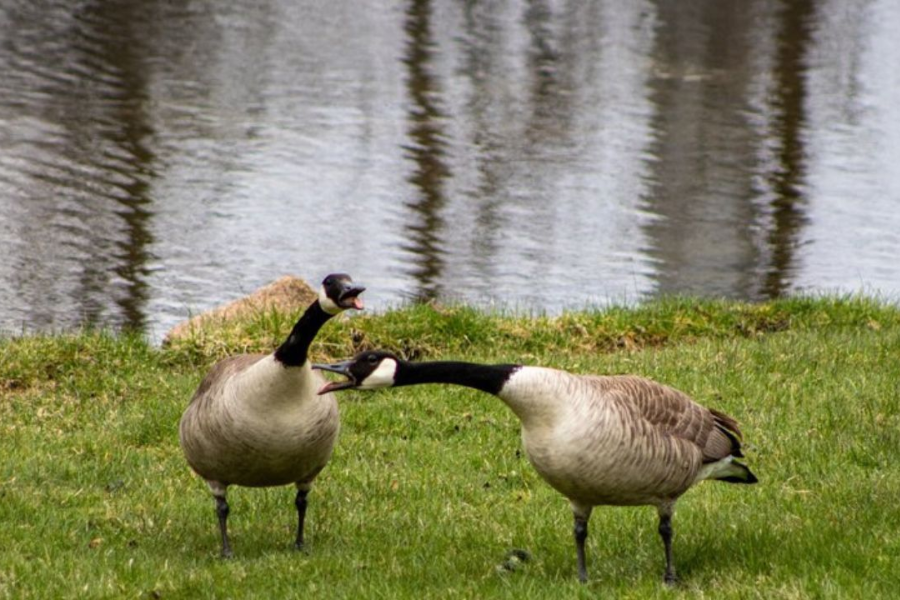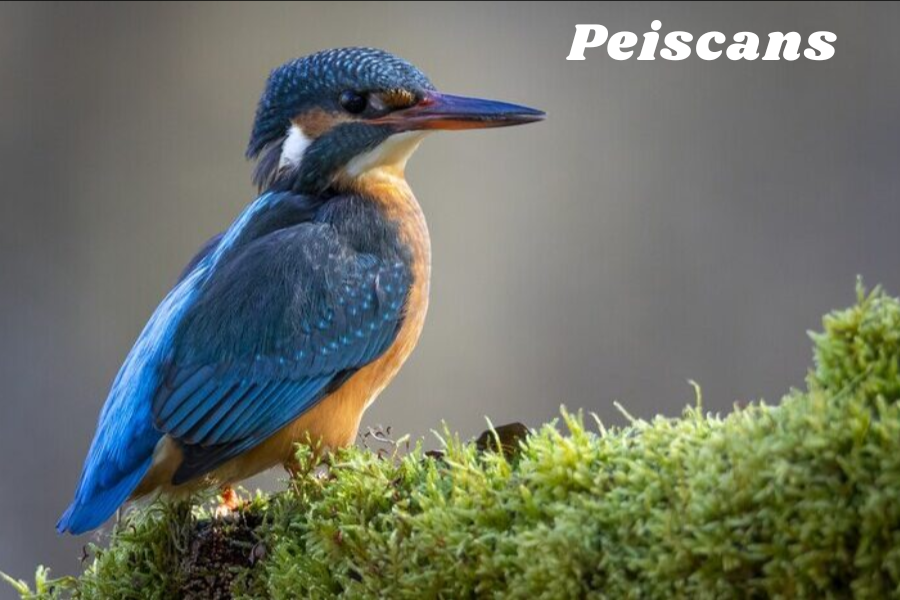Peiscans are enigmatic beings that carry a rich tapestry of history, blending elements of myth and reality. Often depicted as benevolent spirits, they play a crucial role in harmonizing humanity with the natural world. These mystical creatures have deep roots in cultural narratives, emerging from ancient languages that have long since faded from common use.
What truly sets Peiscans apart are their vibrant colors and unique physical traits, which capture the imagination and distinguish them from other legendary figures. Their stories are abundant, filled with adventures and lessons that showcase their remarkable qualities. Across various cultures, Peiscans have held a special significance, embodying wisdom, balance, and compassion.
In many storytelling traditions, they are celebrated as symbols of guidance and understanding, reminding us of the interconnectedness of all life. Their presence in folklore serves as a reminder of the delicate relationship between humanity and nature, encouraging us to nurture and protect the world around us. Whether seen as guardians of the earth or guides through life’s challenges, Peiscans continue to inspire wonder and reflection in the hearts of those who hear their tales.
What Are Peiscans?

Peiscans are an extraordinary and rare group of creatures distinguished by their unusual characteristics and behaviors. This unique class of animals defies traditional categorizations, often blurring the lines between different species. Though they remain largely unknown to the general public, Peiscans have piqued the interest of biologists and zoologists alike, prompting extensive study and research.
One of the most striking aspects of Peiscans is their atypical anatomy. These creatures may possess features that are not typically found in other animals, such as unusual limb structures, distinct coloration, or even specialized sensory organs. Their diverse adaptations enable them to thrive in various environments, showcasing an impressive ability to evolve in response to changing conditions.
In addition to their intriguing physical traits, Peiscans exhibit remarkable behaviors that further enhance their appeal to researchers. Their social interactions, for instance, can be quite complex, displaying a level of communication and cooperation that is uncommon in the animal kingdom. This adaptability and intelligence make them a captivating subject for scientific inquiry.
As exploration continues, scientists are uncovering more about Peiscans and their roles in their ecosystems. Each discovery sheds light on their evolutionary history and the unique niches they occupy, revealing the intricate web of life in which they play a part. As awareness of Peiscans grows, so does the fascination surrounding these mysterious beings, highlighting the wonders of nature that still await discovery.
Tracing The Evolutionary Path Of Peiscans
The evolutionary history of Peiscans has sparked considerable discussion and intrigue among scientists. Fossil records indicate that these fascinating creatures have inhabited the Earth for millions of years, undergoing significant evolutionary changes as they adapted to varying environmental conditions. Their remarkable ability to flourish in diverse habitats is a testament to their evolutionary resilience and success.
Research into their origins has led to multiple theories regarding their lineage. Some scientists propose that Peiscans are descendants of ancient reptiles, drawing parallels between their anatomical features and those of long-extinct species. This perspective emphasizes the adaptability of reptiles to terrestrial and aquatic environments, suggesting that Peiscans have retained certain traits that have allowed them to thrive through changing climates and landscapes.
Alternatively, other theories posit that Peiscans share a common ancestor with early mammals. This viewpoint highlights the evolutionary convergence between these creatures and mammals, showcasing similar adaptations that arose in response to ecological pressures. Such connections suggest that Peiscans have developed unique characteristics that not only enable them to survive but also to play significant roles within their ecosystems.
As research continues, the evolutionary journey of Peiscans remains a dynamic area of study. Each discovery adds layers of understanding to their history and emphasizes the intricate processes of evolution that shape the diverse life forms we see today. Ultimately, the story of Peiscans reflects the broader narrative of life on Earth, illustrating how species adapt and evolve in response to their environments.
The Ecological Niche And Range Of Peiscans

| Aspect | Description |
|---|---|
| Preferred Habitats | Peiscans thrive in coastal regions and riverbanks, particularly where freshwater meets saltwater. These environments offer abundant resources for their survival. |
| Nesting Locations | They often nest on cliffs or sandy shores, favoring spots that provide shelter and easy access to food sources such as fish and crustaceans. |
| Geographical Range | Their distribution extends from the northern hemisphere down to tropical zones, allowing them to adapt to a variety of climates, including warm beaches and cooler inland rivers. |
| Migratory Patterns | Some populations migrate toward warmer waters during colder months, demonstrating their resilience and adaptability in response to changing environmental conditions. |
Peiscans are remarkable creatures known for their diverse habitats and wide distribution across various ecosystems. They primarily inhabit coastal regions and riverbanks, where the interplay of freshwater and saltwater creates a rich environment filled with resources. These creatures often choose nesting sites on cliffs or sandy shores, where they can find shelter and proximity to plentiful food sources like fish and crustaceans. Peiscans can be found from the northern hemisphere to tropical areas, showcasing their adaptability to different climates—from warm beaches to cooler inland rivers. Additionally, some populations exhibit migratory behavior, moving to warmer waters during the colder months. This ability to adjust to seasonal changes highlights their resilience and adaptability, making each encounter with a Peiscan a memorable experience filled with wonder.
Peiscans Physical Attributes
| Attribute | Description |
|---|---|
| Vivid Colors | Peiscans are known for their striking hues, including rich greens and shimmering blues, adorned with intricate patterns that reflect their connection to nature. |
| Special Appendages | Many Peiscans have long limbs and elaborate horns that enhance their visual appeal and improve their mobility across diverse terrains. |
| Size Variations | Peiscans typically range from two to four feet in height, allowing them to adapt and thrive in various environments, making them versatile creatures in both nature and mythology. |
Peiscans are extraordinary creatures that capture the imagination with their vibrant colors, unique physical features, and adaptable size. Their rich greens and shimmering blues are not just visually stunning but also symbolize their close ties to the beauty of nature. With long limbs and intricate horns, Peiscans are designed to move gracefully through various habitats while showcasing their charm. Ranging from two to four feet in height, they exhibit a remarkable versatility that enables them to thrive in diverse environments, both in the natural world and within the realm of mythology. This combination of attributes highlights their significance and the role they play in the ecological balance around them.
Peiscans: Behavior And Traits

| Aspect | Description |
|---|---|
| Peiscans as Charitable Entities | Peiscans are often depicted as kind-hearted beings that embody compassion and friendliness. They are viewed as guardians of the natural world, promoting coexistence among all living creatures. |
| Role in Promoting Natural Harmony | According to folklore, Peiscans are vital in maintaining balance within ecosystems. They are frequently portrayed as mediators between humans and the natural world, fostering peaceful coexistence. |
| Interaction with Humans | Peiscans are known for their interactions with people, often lending a helping hand to those in need. Their gentle nature serves as a reminder of the importance of cooperation and reverence for the environment. |
Peiscans are fascinating creatures that embody a spirit of generosity and kindness, often regarded as charitable entities within various cultural narratives. These beings are celebrated for their compassion and are seen as guardians of the natural world, fostering harmony and coexistence among all living organisms. In folklore, Peiscans play a crucial role in maintaining the balance of ecosystems, often depicted as intermediaries between humanity and nature. Their gentle demeanor allows them to interact positively with humans, often providing assistance and promoting a deep respect for the environment. This portrayal reinforces the importance of cooperation and compassion, reminding us of our interconnectedness with the natural world.
Why Are Peiscans Important?
Peiscans hold a vital place in their ecosystems, acting as both predators and prey within the intricate web of life. Their unique adaptations and behaviors make them essential contributors to biodiversity and ecological balance, underscoring their importance in the natural world.
Key Ecological Roles
As predators, Peiscans play a key role in regulating the populations of smaller animals and insects. This natural control helps prevent overpopulation, ensuring that ecosystems remain healthy and vibrant. By keeping prey populations in check, Peiscans contribute to the stability of their environments, allowing other species to thrive alongside them. Moreover, when Peiscans create burrows or shelters, these structures can later be used by other animals once they are abandoned. This behavior promotes a dynamic habitat that supports a variety of life forms.
Importance of Biodiversity and Conservation
The protection of Peiscans is critical for maintaining biodiversity. These creatures are integral to their ecosystems, and a decline in their populations could trigger a ripple effect, impacting numerous species and ecological processes. Conservation efforts are essential to safeguard their habitats, mitigate human-wildlife conflicts, and ensure sustainable populations. By prioritizing the preservation of Peiscans and their environments, we can help maintain the delicate balance of nature that supports all forms of life.
Interactions with Humans
Although Peiscans primarily exist in the wild, they have been observed interacting with humans, especially in areas where their habitats overlap with human settlements. These encounters can provide valuable insights into their behavior and adaptability, offering a glimpse into how they navigate their environments in relation to human activities. Such interactions also highlight the importance of coexistence, emphasizing the need for conservation measures that consider both wildlife and human interests
Modern Perspectives On Peiscans
| Aspect | Description |
|---|---|
| Peiscans in Modern Culture | Contemporary portrayals of Peiscans often emphasize their vibrant appearances and unique traits, sparking imaginative narratives and artistic expressions. They serve as a bridge between historical folklore and present-day storytelling. |
| Impact on Contemporary Mythology | Peiscans play a significant role in the evolution of modern mythology, as their portrayals in various media inspire younger generations to appreciate and protect the natural world. |
| Allure in Fiction and Dreams | Their mystical and benevolent nature makes Peiscans enchanting figures. They are beloved characters in folklore and fantasy literature, captivating the imaginations of those seeking to explore extraordinary realms. |
Peiscans continue to capture the imagination in contemporary culture, appearing in literature, film, and visual arts as symbols of beauty and wonder. Their vibrant looks and distinctive traits foster imaginative narratives, allowing them to connect the rich tapestry of historical folklore with modern storytelling. As they appear in various media, Peiscans contribute to the development of contemporary mythology, inspiring younger generations to appreciate and protect the natural world. Their enchanting qualities make them favored characters in fantasy literature and folklore, drawing in those eager to explore extraordinary realms filled with magic and adventure. This enduring appeal underscores their significance in our cultural landscape, reflecting a deep-seated desire to connect with nature and the mystical.
Peiscan Behavior And Social Structure

Peiscans are remarkable creatures with behaviors as intriguing as their unique physical characteristics. Understanding their daily activities and social dynamics offers a glimpse into their complex lives and the fascinating interactions they have with one another and their environment.
Daily Life and Activities
Peiscans are primarily nocturnal, which means they thrive during the night when they are most active. Their large, keen eyes are perfectly adapted for low-light conditions, allowing them to navigate the darkness with ease and hunt efficiently. During the day, these clever creatures seek refuge in hidden dens or burrows, providing them with a safe space to rest and avoid potential predators. Their diet is diverse and includes small mammals, insects, and occasionally fruits, making them true omnivores. This adaptability in feeding habits not only helps them survive in various environments but also contributes to their role in the ecosystem as both predators and prey.
Modes of Communication
When it comes to communication, Peiscans possess a sophisticated array of techniques. They employ vocalizations, scent markings, and body language to express themselves and interact with others in their social groups. The sounds they make can range from high-pitched calls that resonate through the night to deep growls that convey warnings or assert territorial claims. Each vocalization serves a specific purpose, whether it’s to attract a mate, communicate with offspring, or signal danger. In addition to sounds, Peiscans use scent markings to establish their territory and indicate their reproductive status. This multi-faceted communication system enhances their social structure and strengthens their bonds with one another.
Mating Rituals and Reproductive Practices
The mating rituals of Peiscans are both elaborate and seasonal, showcasing their unique courtship behaviors. During mating season, males often engage in impressive displays of strength and agility, showcasing their abilities to attract potential mates. Once a pair successfully bonds, they typically remain monogamous for the duration of the mating season, working together to raise their young. The gestation period for Peiscans is relatively short, lasting about three months. After this period, the female gives birth to a small litter, usually consisting of 2 to 4 pups. This family-oriented approach not only ensures the survival of the offspring but also fosters a nurturing environment where both parents play a crucial role in teaching and caring for their young.
Summary
Peiscans are captivating mythical creatures that seamlessly blend folklore with elements of natural history. Often depicted as benevolent beings, they symbolize wisdom, balance, and compassion, playing a crucial role in maintaining harmony within their ecosystems. Their striking colors—ranging from deep greens to shimmering blues—combined with unique physical traits like long limbs and intricate horns, set them apart in various cultural narratives. Primarily inhabiting coastal areas and riverbanks where freshwater meets saltwater, Peiscans thrive in rich environments that offer ample resources. They prefer nesting on cliffs or sandy shores, allowing easy access to food sources such as fish and crustaceans. Their adaptability enables them to inhabit temperate and tropical regions, and they exhibit migratory behaviors, seeking warmer waters during colder months.
In modern culture, Peiscans continue to enchant audiences through literature, film, and visual arts, serving as a bridge between ancient folklore and contemporary storytelling. Their depictions highlight the significance of conservation and environmental stewardship, inspiring younger generations to appreciate and protect the natural world. Beyond being mere mythological figures, Peiscans represent a rich tapestry of ecological importance and cultural heritage, embodying the ongoing relationship between humanity and nature. Each encounter with a Peiscan serves as a reminder of the beauty and complexity inherent in the natural world, urging us to honor and preserve it for future generations.
FAQs About Peiscans
1. What are Peiscans?
Peiscans are mythical beings known for their unique physical characteristics and behaviors. They represent a blend of folklore and nature, often depicted as kind spirits that foster harmony between humanity and the natural world.
5. How do Peiscans contribute to their ecosystems?
Peiscans play a crucial role in maintaining ecological balance as both predators and prey. By controlling the populations of smaller animals and insects, they help prevent overpopulation and support the health of their habitats. Their nesting activities also create shelters for other species.
6. Why are Peiscans important in modern culture?
In contemporary culture, Peiscans are often featured in literature, film, and visual arts, highlighting their vibrant characteristics and unique narratives. They serve as symbols of environmental stewardship, inspiring younger generations to appreciate and protect the natural world.
7. What is the significance of Peiscans in folklore?
Peiscans are seen as guardians of the natural world, promoting coexistence between humans and nature. They embody compassion and kindness, making them cherished figures in various storytelling traditions.
8. How have Peiscans evolved over time?
The evolutionary journey of Peiscans is a subject of debate among scientists. Fossil records indicate they have existed for millions of years, adapting to diverse environmental conditions. Some theories suggest they are descendants of ancient reptiles, while others propose a common ancestry with early mammals.
9. How do Peiscans interact with humans?
Peiscans have been observed interacting with humans, particularly in areas where their habitats overlap with human settlements. These interactions provide valuable insights into their behavior and adaptability, reinforcing the importance of conservation efforts.
10. What challenges do Peiscans face?
As mythical beings, Peiscans symbolize broader themes of environmental challenges. Protecting their habitats and reducing human-wildlife conflict are crucial for maintaining their populations and the ecological balance they represent.
Don’t Miss the latest updates and alerts visit: Fashion Birthday!
















+ There are no comments
Add yours